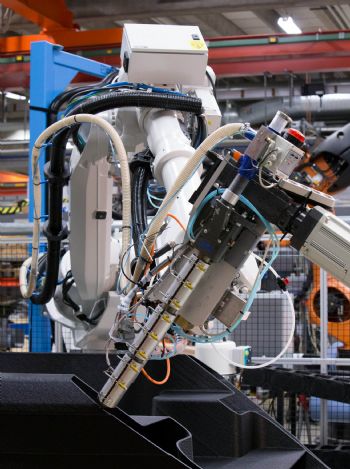 ADAXIS
ADAXIS, a robotics software company launched in early 2021, has raised more than 1 million euros in pre-seed funding from EIT Manufacturing, Newfund Capital, SkalePark and regional grants. With its new software platform, ADAXIS aims to make it possible to transform and program commercially available industrial robots as flexible manufacturing cells based on 3-D printing.
ADAXIS says that over the past two decades, 3-D printing has grown from a niche technology to one being used in a wide range of industries, including aerospace, automotive, marine, and construction.
“Today, companies are looking for new, affordable, and efficient ways to leverage this technology to make larger and more advanced parts. An increasingly popular solution is to turn industrial robots into large-scale 3-D printers by combining them with print heads for metal, plastic, composites, or concrete. This approach has the potential for rapid industrial adoption but is currently limited by the often complex and time-consuming task of programming the robots.”
The company’s AdaOne covers all the tasks required to manufacture a part, from program generation to real-time process supervision and ‘multi-physics numerical simulation’.
“Moreover, the software is scalable and can program robots of any size, allowing printable volumes up to tens of cubic metres. This capability gives companies the power to set up local, on-demand production of highly advanced parts, reducing the need for storage, transport, and logistics.”
ADAXIS was launched at the beginning of 2021 by Henri Bernard, Guénolé Bras, Emil Johansson and Vasan Churchill, following years of applied research into using industrial robotics for advanced manufacturing at ESTIA in France and RISE in Sweden. The team first met during an EU co-funded collaborative research project where they found a shared vision to bring 3-D printing and automation together.
AdaOne’s proprietary algorithms for multi-axis toolpaths enable the creation of parts that could previously not be manufactured. Large, complex parts can be realised without assembly steps and with minimal material waste. It is also possible to perform repair of damaged parts by allowing material to be deposited on existing 3-D surfaces. Moreover, customised deposit orientation improves surface quality and mechanical strength by avoiding traditional horizontal layers.